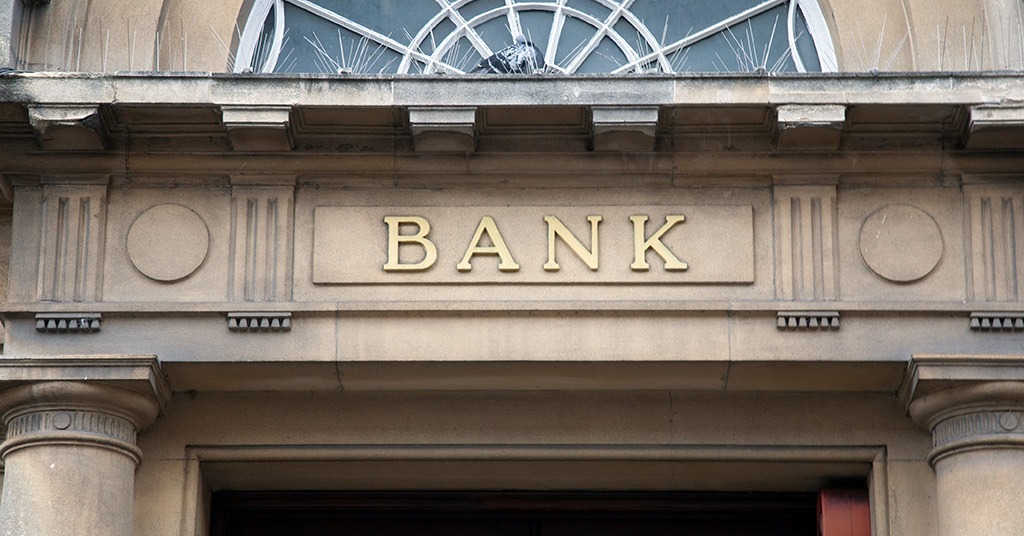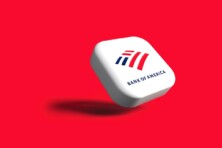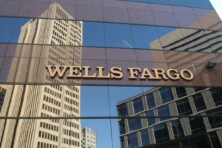The aggregate assets stored within the top 10 leading banks in the US exceeds $9 trillion

10 leading banks in the US. Source: shutterstock.com
The US banks amazed the public in 2018 showing three straight quarters of record profitability. The industry earned $62 billion net income in the last quarter of the year which was 29% more than a year ago, and the 1.41% return on assets was the highest registered within the last 32 years.
The beginning of 2019 continued a positive tendency. Banks and financial institutions insured by the FDIC reported total net income of $60.7 billion in the first quarter of 2019, $4.9 billion (8.7%) up from a year earlier. Considering the shutdown that blocked so many governmental agencies at the start of this quarter, the results are really impressive.
Nevertheless, the fund amount of individual institutions slightly decreased compared to the 4Q 2018 data. Though the top banking players remain the same, many positions in the leaders’ table have changed over this short period. The aggregate assets stored within the top 10 giants of the American banking industry exceed $9 trillion.
The 10 leading banks in the US currently are:
|
Rank |
Institution |
Headquarters |
Assets |
Asset Growth (vs. prior year) |
The number of customer accounts |
| 1 | Chase Bank (JPMorgan Chase & Co.) | Columbus, OH | $2,22 trillion | 3.52% | 54,402,697 |
| 2 | Bank of America | Charlotte, NC | $1,78 trillion | 1.75% | 71,782,126 |
| 3 | Wells Fargo Bank | San Francisco, CA | $1,69 trillion | -3.32% | 78,080,422 |
| 4 | Citi | Sioux Falls, SD | $1,41 trillion | 1.56% | 20,467,676 |
| 5 | US Bank | Minneapolis, MN | $459 billion | 0.75% | 27,602,813 |
| 6 | PNC Bank | Pittsburgh, PA | $370 billion | 0.13% | 17,965,229 |
| 7 | Capital One | Mclean, VA | $304 billion | 4.60% | 16,484,837 |
| 8 | TD Bank | Wilmington, DE | $302 billion | 4.75% | 19,590,412 |
| 9 | The Bank of New York Mellon | New York, NY | $286 billion | -3.66% | 933,357 |
| 10 | State Street Bank and Trust Company | Boston, MA | $242 billion | 2.90% | 37,836 |

The biggest bank’s 5000 branches serve nearly half of America’s households with a broad range of financial services. Chase represents the banking business of JPMorgan Chase & Co., an old-timer of the US financial sphere. Over its 200+ years, it has become a leading global firm in its realm.
Traditions don’t hinder the bank’s progress. Recently, it has created a crypto-currency to facilitate transactions. JPM Coin is the first digital currency officially supported by a major US bank.
JPM Coin, which runs on blockchain technology, has been used successfully to move money between the bank and a client account. The management says it sees potential in digital coins as they reduce risk and enable immediate transfers.

In 2019, Bank of America was named one of the “100 Best Companies to Work For” by Fortune magazine.
The corporate focus is on responsible growth, which presumes environmental impact, social accountability, and leadership ethics. It appeals to many customers as well as the terms of the financial services they provide. This institution is exceptionally good at wealth management, corporate and investment banking and trading across a broad range of asset classes.
The bank’s history of success and trustworthiness serves as an additional advantage. Back in the old days, it started the first nationally licensed credit card program, originally called BankAmericard. After rapid and widespread adoption and growth, the program spread around the globe and was eventually rebranded as Visa.

The net income of the bank in 1Q 2019 totaled $5.9 billion. Their financial results display continued strong credit performance and high levels of liquidity.
Over the past two years, the corporate management has undertaken a massive effort to transform Wells Fargo to a customer-focused, efficient, and innovative institution. They have been trying to restore customers’ trust after one of the biggest banking scandals in history. It was revealed that corporate staff had created millions of fake bank accounts in order to reach their sales targets pressed for by the management.
To date, the company has reviewed 165 million accounts going back 15 years, contacted more than 40 million customers — both individuals and small businesses — and provided huge compensation sums to customers harmed by the fraudulent activities. They have also introduced a great new cardless ATM concept to attract new customers and please the loyal ones.
The bank’s achievement of the 3rd position in the national rating shows that their efforts have not been fruitless. One-third of the US population trusts the company with their finances despite a stained reputation.

Citibank is the consumer division of financial services multinational Citigroup. It is a global bank represented in 98 countries and jurisdictions of the world. It recently launched a credit card with India’s top digital payments firm Paytm. It will greatly extend Citi’s retail presence abroad.
Citi’s Global Consumer Bank (GCB) was recognized by Global Finance as the best consumer mobile bank.

US Bank is owned by the bank holding company US Bancorp. It ranks 81 on the Forbes America’s Best Banks 2019 list. The bank is also recognized for its diversity-inclusive policies and best employee treatment.
The holding provides a full range of financial services. It currently strives to increased digitalization and mobility, closing 21 Chicago-area bricks-and-mortar locations. Instead of supporting the rarely visited branches, the management aims to reinvest in digital and mobile banking platforms as well as redesigned core retail banking markets. Ankit Bhatt, senior vice president for omnichannel experience of U.S. Bank, was named Digital Banker of the Year by American Banker. He is a fan of “co-creating” apps and capabilities with customers. Therefore, the US Bank brand-new mobile app was directly fueled by analysis of consumer needs and direct customer feedback.
The bank also contributes to the social well-being of the country. A few days ago it received $70 million in tax credit allocations from the U.S. Treasury Department as a part of the New Market Tax Credit (NMTC) Program designed to narrow down persistent gaps in economic outcomes in lower-income communities. A portion of this allocation will be assigned to projects in rural communities, while another part will create a small business loan pool to make a difference in local job creation.

More than 8 million consumers and small businesses use their services. PNC branches and ATMs are present in 19 states and DC. It is one of the leading credit providers to middle market companies across the country.
This May, for example, it helped finance the prominent low-cost provider of receipt and labeling solutions Iconex. Furthermore, it reached a definitive agreement with Federated Investors, Inc. that will bring about $21 billion of custom liquidity and fixed-income solutions to address the needs of PNC’s corporate and institutional clients.
PNC Asset Management Group was ranked as one of the top U.S.-based bank-held wealth managers by Barron’s in 2018.

Being a Fortune 500 company, Capital One offers a broad range of financial products and services to consumers, small businesses and commercial clients in the U.S., Canada and the UK. It cherishes supplier diversity and fosters robust relationships with minority and women-owned businesses. Together with Consumer Action, they provide MoneyWi$e financial education resources in multiple languages for consumers.
The bank offers great banking solutions for savings, monitoring credit scores, cashback and rewards programs.

“TD” in TD Bank stands for Toronto-Dominion. Founded in Canada, this bank has gained greater popularity among American consumers. Now it has more branches in the USA than in its native country.
During the financial crisis, Canadian banks preserved their statuses much better than American ones. Thus, TD still earned $3.8 billion during the worst year of the meltdown. This fact put it in an advantageous position on the US market.
A new branding campaign “Unexpectedly Human” relates to all the basic demands of their clients (long working hours, mobility, speed, and, of course, human touch) in a fun and fresh way. The bank’s customer service is probably one of the main factors bringing it to the top 10.

This bank was created in 2007, when The Bank of New York and Mellon Financial Corporation merged. It helps clients manage and service their financial assets throughout the investment lifecycle.
Currently, this custodian bank is making great efforts to attract deposits, and its shares went significantly down on the market. Since competition for deposits is still high, and client activity is relatively low, there is additional pressure on the company. BNY had its first quarterly profit miss in two years, as the rate it paid on deposits increased.

This is a subsidiary of the State Street Corporation, one of the world’s leading providers of financial services to institutional investors, and serves as the custodian bank. Their DataGX is an award-winning financial data management platform.
This year, the company is working in challenging conditions as the industry is forced to offer more affordable products. The fee decline contributed to a 23% plunge in profit and their shares fell 4.4%. State Street is responding to the pressure by focusing on cost-cutting. In particular, it plans to lay off 15% of senior management.
The nearest changes in the power balance are expected to come from the announced BB&T merger with SunTrust Banks. Although right now these two institutions didn’t make it to the top 10, together they’ll have every chance.
The combined company will operate under a new name and have around $442 billion in assets, $301 billion in loans and $324 billion in deposits. This merger is anticipated as the biggest financial deal since the financial crisis.
SEE ALSO:









